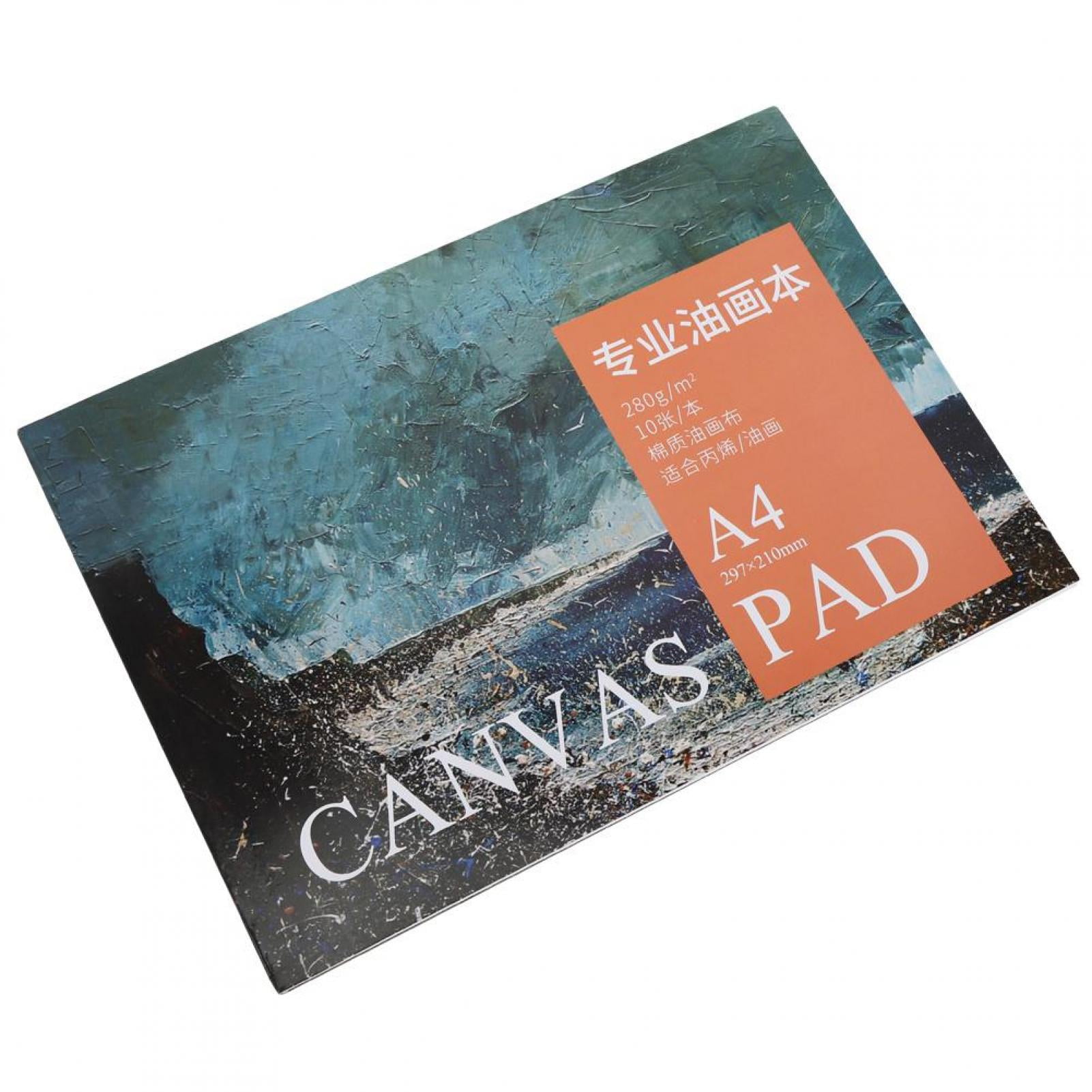

When you’re ready to paint in oil, you’ll need something to paint on.

So, if you’re working on a 16×20 inch canvas, a palette roughly the size of a sheet of printer paper should be ideal. Try this method out when you’re just starting, and see how it works for you. Note from the author: While this is anecdotal as opposed to technical advice, I find that for beginners, a good rule of thumb is to have a palette space that is about half the size of your finished canvas. You want plenty of room to mix colors and “spread out” on the palette without feeling too crowded. Be sure that it’s large enough for what you’re doing, though. It can be a large piece of glass or ceramic or even a disposable books of palette pages sold at art supply stores.

You don’t need to be a bearded European artist to use a palette. Really, it’s just the term for the surface upon which you mix your paint. Have newsprint or rags on hand for cleaning your brush off and drying the bristles after you’ve dipped it in the cleaning solution. Cloths are great, but depending on how frequently you are changing colors, you may get more mileage out of plain newsprint. You’ll use linseed oil almost like you would use water to thin watercolor paint. However, its oil base makes it a softer medium to use to thin your oil paint to attain an ideal consistency without losing the paint’s texture. Like the mineral spirits, linseed oil will dilute oil paint. Many beginners get confused about the difference between linseed oil (or oil media such as galkyd oil) and turpentine or mineral spirits. Jars like this are available at art supply stores. You can fill it with your turpentine or mineral spirit mixture, and gently rub the bristles of the brush against the coil to remove excess paint. A jar with a coil inside (sometimes called “silicoil”) is ideal for cleaning your brushes. You’ll need some sort of vessel to store your turpentine or mineral spirits for cleaning your brushes as you paint. While “turpentine” is a catch all phrase for this substance, these days, mixtures of odorless mineral spirits are a common substitute. With oil paint, you don’t clean your brushes in water instead, you clean them with a paint thinning solution. Once you start painting you will quickly learn what shapes and sizes of brush you gravitate toward, and what effects you’re hoping to achieve.įor a starter, a selection of one or two small, medium and large round brushes, respectively, should be enough to educate you on what your painting preferences are. You don’t need to break the bank and buy every single type of brush when you’re just getting started with oil paint. While water-soluble oil paint is a great product, it’s not what we’re talking about here. A couple of greens, such as viridian, and some nice, earthy browns such as burnt sienna, burnt ochre, raw sienna and raw ochre are nice to have on hand.īe sure that you are buying oil paint rather than water-soluble oil paint. Not vital, but nice to have:Ī smaller tube of phthalo blue is helpful, but it’s a fairly powerful color so you probably won’t need a large tube. Titanium white, ivory black, cadmium red, permanent alizarin crimson, ultramarine blue, cadmium yellow light and cadmium yellow. When I went to art school, we were given the following list of “essential” oil colors to buy: Necessary: 200 ml tubes are a good size to get started with. If you are comfortable mixing colors, you can start out with the bare minimum and simply buy individual tubes of white, black, red, blue and yellow paints.If you’re just getting started, you can purchase a kit which is stocked with all of the colors you’ll need.But what type, and what colors? You have a few different options: But once you understand the role that each supply plays, you’ll be able to start painting with a good understanding of how each supply plays into the painting process.Īrmed with these supplies, you’ll be ready to start exploring the wonderful world of oil painting techniques to create fine art. Oil painting supplies might seem confusing and even a little scary at first: beyond just paint, you’ll have to stock up on things like turpentine and mineral spirits. Are you curious about trying out oil painting, but don’t know where to start? This post will guide you through the essential oil painting supplies you’ll need to get started on a fantastic artistic journey.Ĭolor block study via Craftsy instructor Joseph Dolderer


 0 kommentar(er)
0 kommentar(er)
